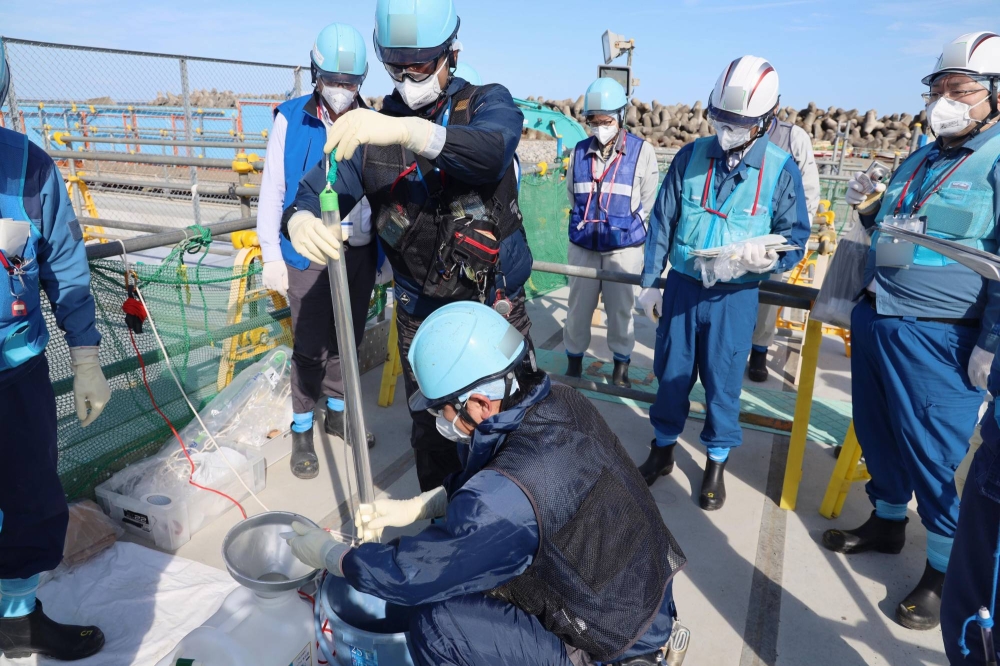 Tokyo Electric Power Company Holdings (TEPCO) has begun releasing a second batch of treated water from the Fukushima Daiichi NPP amid continuing tensions with neighbouring countries.
Tokyo Electric Power Company Holdings (TEPCO) has begun releasing a second batch of treated water from the Fukushima Daiichi NPP amid continuing tensions with neighbouring countries.
TEPCO said it completed inspections after the initial release, which tended in September, and found no reason to alter procedures. This comprised 7,788 tonnes of treated water, stored in 10 tanks within the plant's premises, which were diluted and discharged without any issues.
In the second release will involve about the same amount of water discharged over 17 days. More than 1m tonnes of treated water has accumulated at the station, which still contains tritium that the ALPS technology (advanced liquid processing system) cannot remove. This water will be diluted to safe levels and discharged to the sea over about 30 years. The ALPS system removes 62 types of radionuclides, except for tritium (3H), a radioactive isotope of hydrogen. In addition, carbon-14 (C-14), potassium-40 (K-40), strontium-90 (Sr-90), iodine-129 (I- 129), and some isotopes of caesium (Cs) and plutonium (Pu) remain in the water, albeit in smaller quantities.
The discharge process marks a major step in the decommissioning process for the plant, which suffered a triple meltdown following the March 2011 tsunami. More than a thousand tanks are located at the Fukushima site containing 1.34m tonnes of water. Although the project was approved by International Atomic Energy Agency (IAEA) experts, neighbouring countries and the fishing industry are opposing the plan.
“We would like to continue approaching this with the utmost caution,” TEPCO spokesperson Kenichi Takahara said. “It is crucial to maintain a strong determination to safely proceed ... while making every effort to avoid causing dissatisfaction.” Following the announcement of the first release, China implemented a ban on all seafood imports from Japan, citing safety concerns. China was a key market for Japanese agricultural and marine products. Following the initial water release, tritium levels in seawater and fish near the nuclear plant were measured by government officials, but no detectable amount has been found.
The tritium concentration in the second batch of diluted ALPS treated water is far below the Japan’s operational limit, according to IAEA experts present at the site. Just as they did before the discharge of the first batch, IAEA experts stationed at the IAEA Fukushima NPS Office took samples from the second batch of diluted water, after it was prepared for discharge. The IAEA’s independent on-site analysis confirmed – as it also did for the first batch – that the tritium concentration in the diluted water that is being discharged is far below the operational limit of 1,500 becquerels per litre.
Protests, nevertheless continue. Chinese Foreign Ministry spokesperson Wang Wenbin told a press briefing that China conducts radiation monitoring of the marine environment in waters under its jurisdiction. Monitoring of the level of radiation in the ocean, emergency measures on aquatic imports from Japan and risk monitoring of nuclear-contamination of aquatic products are all legitimate, reasonable steps to respond to Japan's discharge of nuclear-contaminated water and protect our national interests and public welfare, Wang said. "The discharge will last decades. Great uncertainty remains as to whether the contaminated water will be up to standard after treatment."
Image: Workers check tritium levels in treated radioactive water from the Fukushima Daiichi NPP before the second discharge begins (courtesy of TEPCO)



